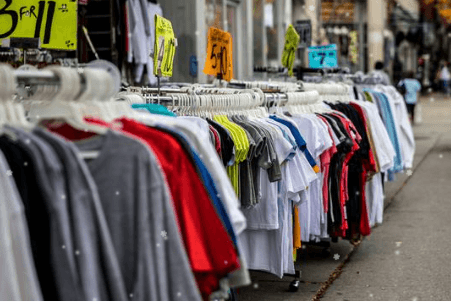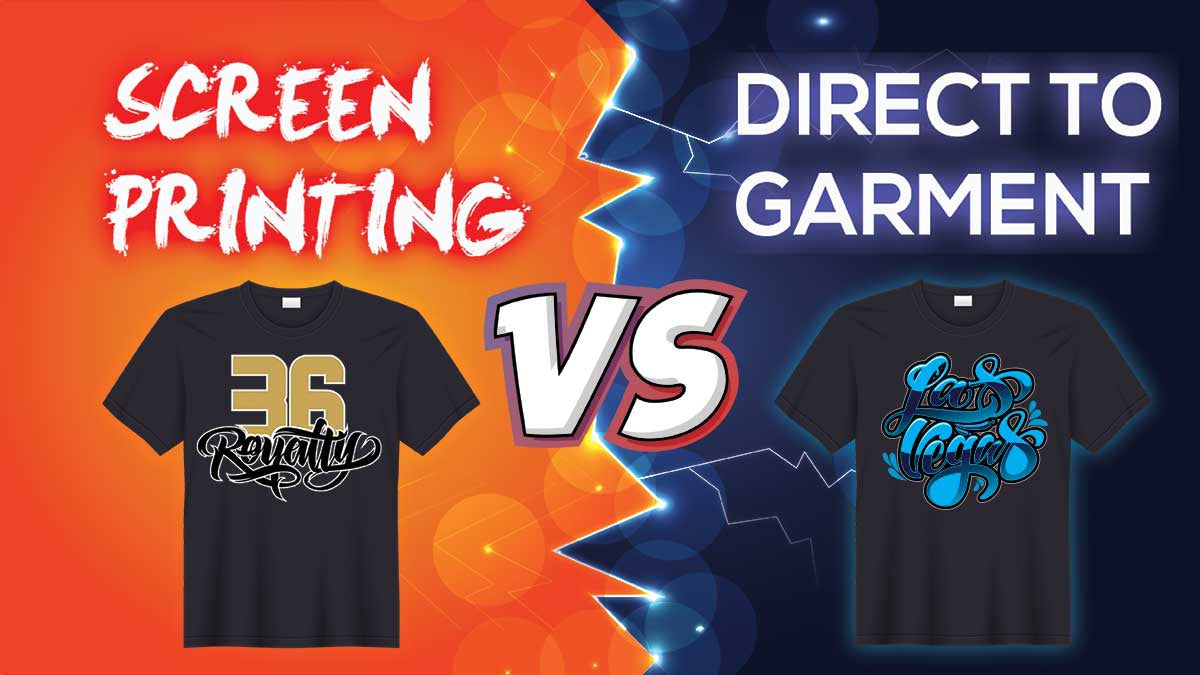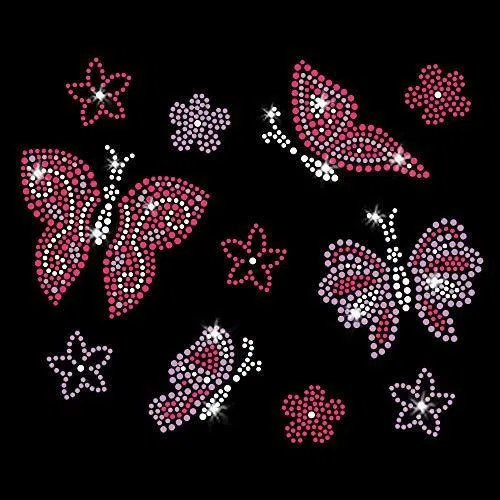In this article, we’ll look into the differences between DTG and screen printing, the designs they work best with, and how sustainable each technique is.
What is screen printing and how does it work?
Screen printing is a printing method where ink is pushed through a woven screen (also called mesh stencil) onto fabric. The ink doesn’t soak into the fabric, but lays on top of the product.
With screen printing, a special screen has to be made for each element of your design. Once that’s done, the colors and elements of the design are applied layer by layer onto the garment. The more layers your design has, the longer it’ll take to print it and the thicker the design will feel on the product.

The long setup time is why screen printing is primarily used to print items in bulk. It’s not cost-effective to print only a t-shirt or two if it’s taken hours to create the stencils for your design.
What type of designs work best with screen printing?
Screen printing works best for solid graphics without small details. This basic typography, geometric designs, symbols, and shapes. That’s because making stencils for intricate designs is time-consuming and it’s difficult to get the details right during the printing process.
Since each color is applied separately, screen printing is also mostly used for designs with few colors. Print providers often limit how many colors you can have in your design, and usually no more than 9 are allowed.
What is direct-to-garment printing and how does it work?
Direct-to-garment, or DTG, is a printing method that sprays the ink onto the garment. The ink then soaks into the fibers of the garment. It’s like printing on paper, but on clothing.

What type of designs work best with DTG?
DTG printers offer a lot of color options which means you can print detailed designs and photorealistic images with almost no color limitations. This is important for those businesses that want to try out various colors and designs.
The thing to avoid with DTG is transparencies. Elements that are less than 100% opaque don’t translate well in DTG printing—printers will attempt to make up the missing color by spreading the ink, causing the fabric to have a lot of gaps. That’s why it’s best to use solid colors or fake semi-transparency by halftoning.
Other than that, you can work with detailed designs and color patterns as much as you wish. For best results, we suggest creating graphics in the sRGB color profile—it matches DTG printer color possibilities the best.
What’s better: DTG or screen printing?
DTG and screen printing yield fine quality prints, but they differ in method and cost. DTG uses a printer to spray the ink into a garment, while screen printing layers the ink on top of the fabric





